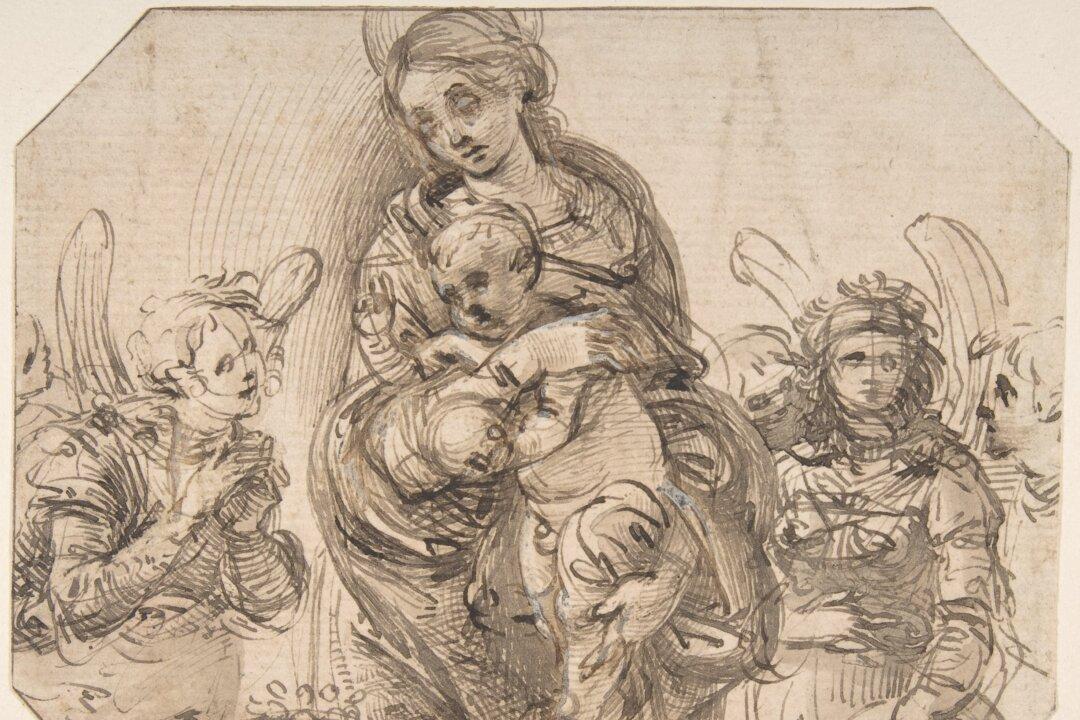Art is said to be the expression of the soul. Whether it be provocative or aesthetically pleasing, artists imbue their work with their life experiences. What seems dangerous to some, may be beautiful and exotic to others based on situations that gave them a notion of how to respond and how to view them.
The joys, sorrows, pains, and the questions of our purpose for living, shape how we view the world. In this way, what artists paint generally portray their ideals.
And, conversely, what we think is beautiful says volumes about who we are. Understandably, then, the idea of what is beautiful has changed dramatically through the ages in the Western world. Here are some thoughts on beauty to think about. (The images help illustrate the various ideas on beauty.)
Beauty as Justice
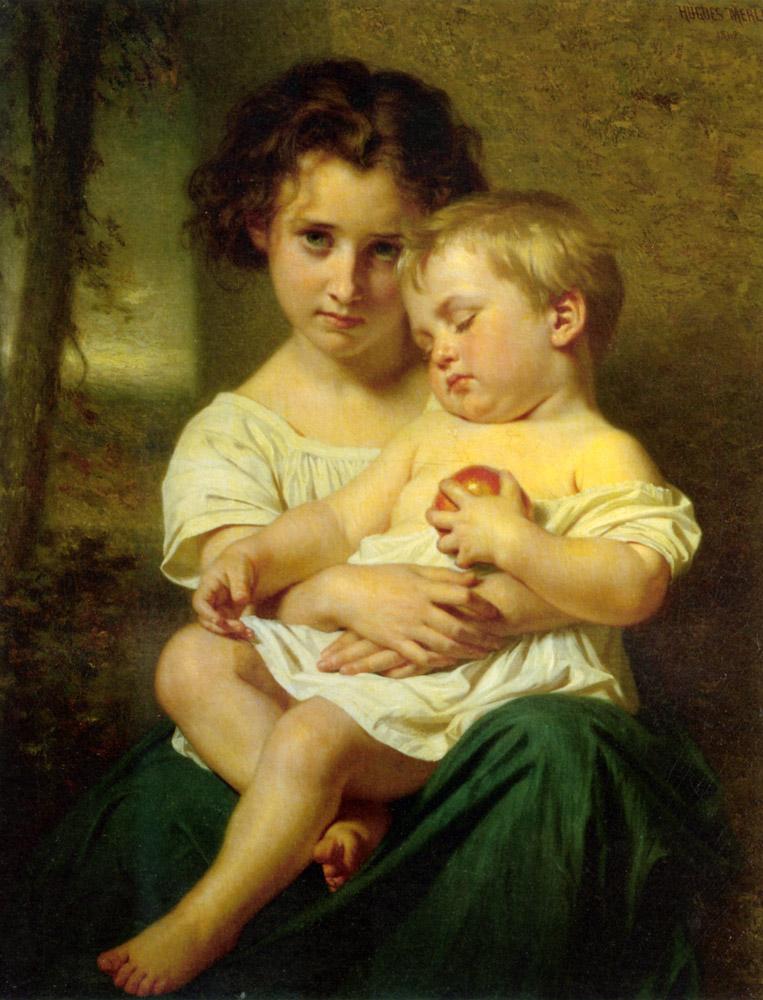
Beauty as Justice: Hughes Merle (1823-1881) “Young girl holding a sleeping infant” Oil on canvas, 1862,31.97 inches by 25 inches, Private collection. (artrenewal.org)
Elaine Scarry, a professor at Harvard University wrote “On Beauty and Being Just” that “beauty assists us in getting to justice.”
In her book, Scarry relayed a conversation with her friend in which the topic turned towards beauty. She suggested “that beautiful things give rise to the notion of distribution, to a life-saving reciprocity, to fairness not just in the senses of loveliness of aspect but in the sense of ‘a symmetry of everyone’s relationship to one another.’”
Here, Scarry discusses beauty as having a disposition of empathy. Seeing beauty in one thing gives us a reference to see how it exists elsewhere and in everyone.
Beauty as Determined by Gods

Edward Burne-Jones (1833-1898) “An Angel Playing a Flageolet” Watercolour and bodycolour, 1878, 29.49 inches by 24.09 inches, The National Museums and Galleries on Merseyside (Liverpool, United Kingdom). (artrenewal.org)
Plato, in the book “Laws,” admires the Egyptians and their views on the arts. They believed that we shouldn’t alter traditions because we would likely mess it all up.
The Egyptian arts were believed to be composed by gods to refine civilization and to instill virtue. “You will wonder when I tell you: Long ago they appear to have recognized the very principle of which we are now speaking- that their young citizens must be habituated to forms and strains of virtue. These they fixed, and exhibited the patterns of them in their temples; and no painter or artist is allowed to innovate upon them, or to leave the traditional forms and invent new ones,” Plato wrote.
He goes on to say, “For the love of novelty which arises out of pleasure in the new and weariness of the old, has not strength enough to corrupt the consecrated song and dance, under the plea that they become antiquated.”
The ancient Egyptians would condemn the avant-garde.
Beauty as Found in Nature
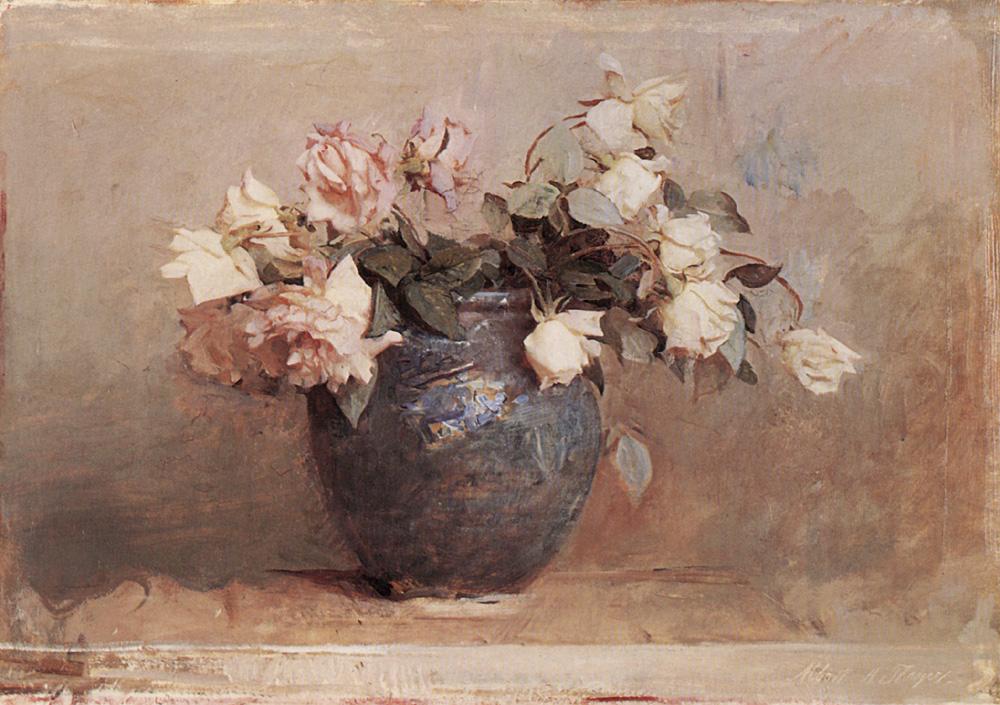
Beauty as Found in Nature: Abbott Handerson Thayer (1849-1921) “Roses” Oil on canvas,22.32 inches by 31.32 inches, Museum of American Art, Smithsonian Institution. (artrenewal.org)
Gretchen Rubin, author of “The Happiness Project” says that contemplating the beauty of nature can brighten the mood. She writes “Nature is impersonal, awe-inspiring, elegant, eternal. It’s geometrically perfect. It’s tiny and gigantic. You can travel far to be in a beautiful natural setting, or you can observe it in your backyard—or, in my case, in the trees lining New York City sidewalks, or in the clouds above skyscrapers.
In fact, she believes that such contemplation leads to wisdom. She quotes Boethius, “Contemplate the extent and stability of the heavens, and then at last cease to admire worthless things.”
Beauty as Eternal
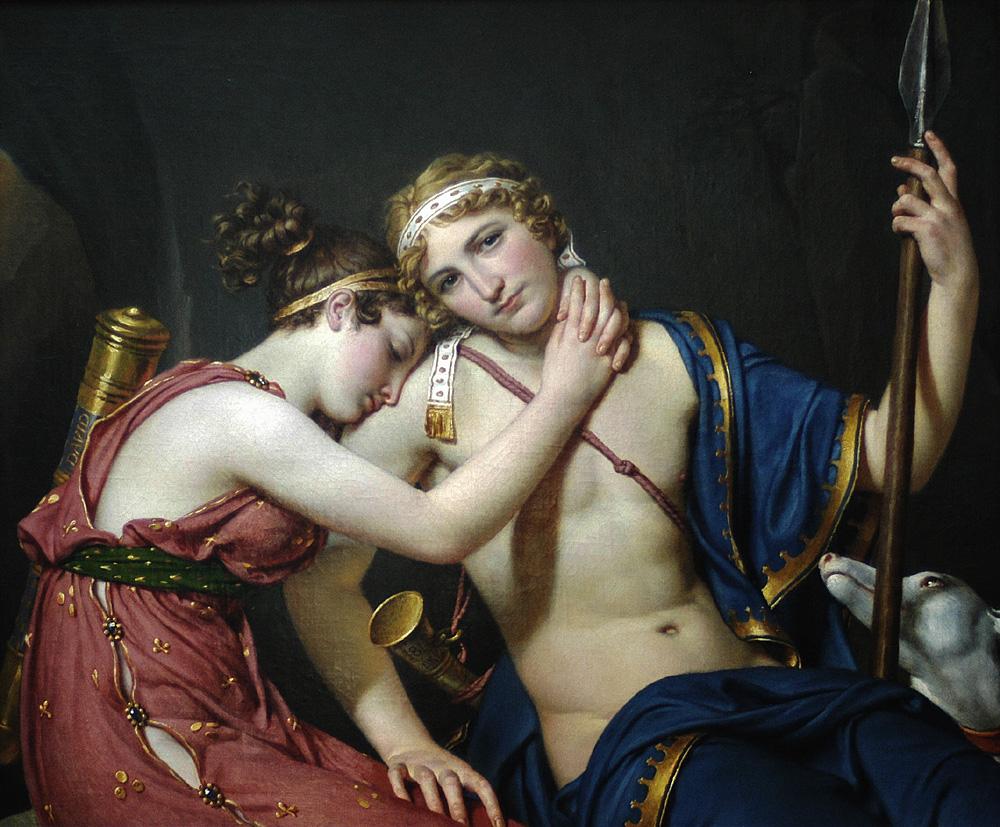
Beauty as Eternal: Jacques-Louis David (1748-1825) The Farewell of Telemachus and Eucharis Oil on canvas, Private collection. (artrenewal.org)
The idea that beauty transcends the transient is a more ancient way of thinking. The famous painter and poet Kahlil Gibran was penned to have said “Beauty is eternity gazing at itself in a mirror.”
The idea also delves into the realm of emotion. Compassion is more beautiful than love. In compassion, there are no conditions in cherishing others. Compassion is something that never dies or fades away as it is unconditional, thus eternal and beautiful.
Beauty as Compassion
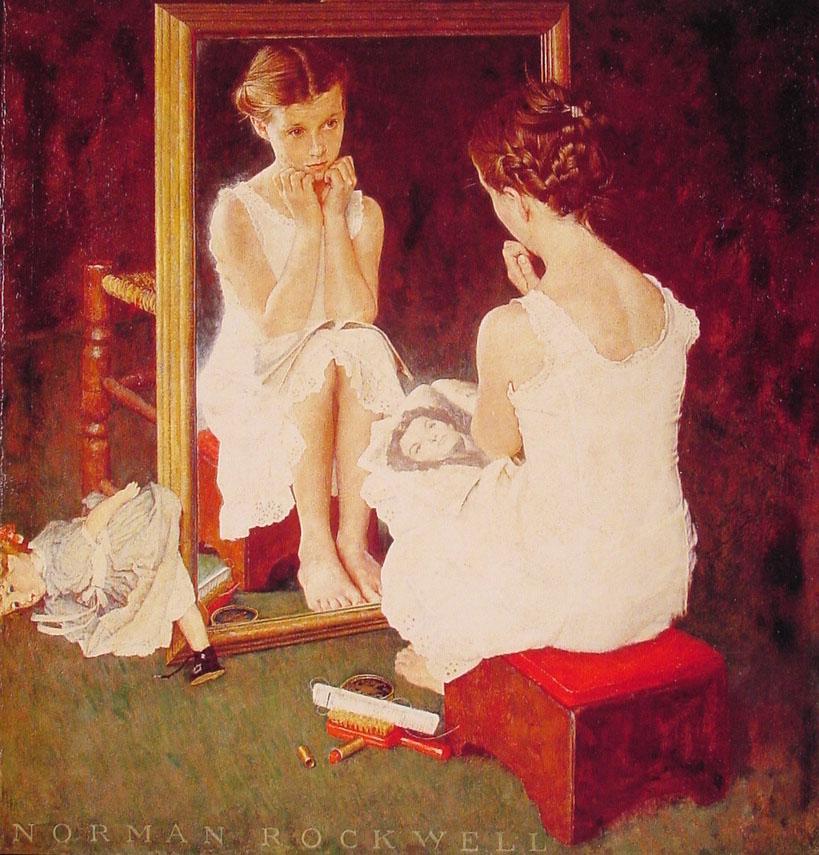
Beauty as Compassion: Norman Rockwell (1894-1978) “Girl at Mirror,” 1954, oil on canvas Norman Rockwell Museum (Stockbridge, Massachussetts, United States). (artrenewal.org)
Oscar winner Lupita Nyong'o says “What actually sustains us, what is fundamentally beautiful is compassion, for yourself, and for those around you. That kind of beauty inflames and heart and enchants the soul.”



